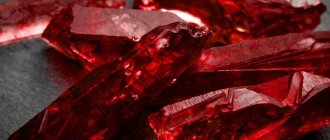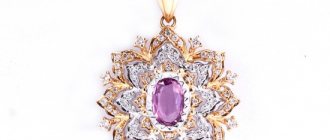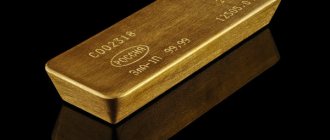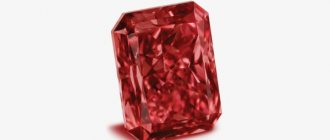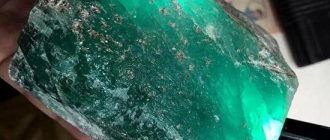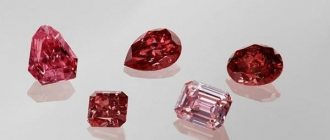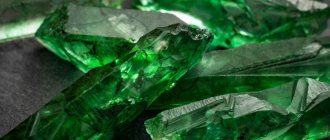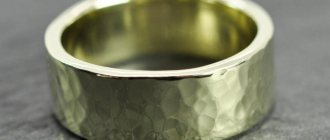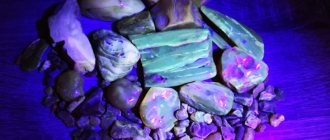The most frequently asked question is: “How much does a Burmese ruby cost in Bangkok?” Also everyone is wondering: “Isn’t it cheaper to buy rubies from a mine in Myanmar, in Mogok or Mong Hsu, instead of coming to Bangkok? Why are rubies cheaper in Bangkok?”
All these questions are fair, and we will try to answer them in this article.
So first let's answer the questions that have been discussed before why it is cheaper to buy rubies or other gemstones in Bangkok rather than in Myanmar or anywhere else in the world. The best place to buy rubies is in Bangkok, as this is the largest market for trading colored gemstones. The best way to find out is to search on eBay. You will find Thai dealers who have the largest stock of rubies compared to any other country. But this does not mean that all the stones presented are genuine or of higher quality than elsewhere.
However, the fact remains that this is still the largest market for cut Burmese rubies and therefore you can get the best deal here.
History of the stone
The closest relative of emerald and sapphire, a stone of the corundum group, ruby adorned the rings, crowns, and bracelets of noble persons even before our era. At least in the 4th century BC, in the ancient Indian great book “Mahabharata” this gemstone was mentioned several times. Symbols of power of rulers of different countries were also decorated with rubies, along with other precious stones. The stone was also noticed on weapons: rubies were used to decorate the hilts of swords and daggers.
The Victoria and Albert Museum of Decorative Arts and Design (London) houses many such specimens. This dagger is quite young, relative to ancient relics, and was made for the Indian Maharaja around 1800 (19th century).
To decorate the handle, 378 rubies of different origins were used; in addition, the weapon was inlaid with emeralds and diamonds.
There are also references to a large rare ruby that belonged to Tamerlane himself: the size of a chicken egg, of exceptional purity. There is no reliable information about the fate of this delightful stone, because today the Timur Ruby is not a ruby at all, but a red spinel. Perhaps we do not know all the details in this story, and the real stone is kept by an unknown private owner. The official version is that the confusion occurred because in the time of Tamerlane they did not know how to distinguish a ruby from an inexpensive spinel (which many experts very much doubt).
The size, age, color, purity of a ruby and its origin have a huge impact on the cost of a piece of jewelry. Special stones will always be surrounded by many legends, and collectors will willingly pay incredible sums for the right to own unique specimens. For example, in 2015, one such ring with a “Sunrise” ruby was sold at Sotheby’s auction: this is real Burmese corundum weighing 25.6 carats. The most valuable color “pigeon blood” in the jewelry world, the exemplary purity of the stone and the setting from Cartier did their job: the final cost of this ruby ring was 30 million and 380 thousand dollars (more than $1 million per carat). The stone has no analogues in the world.
Features of ruby and its varieties
Natural ruby has many shades - from rich red to light lilac - the color of the stone depends on its place of origin. Of particular value are stones with a pronounced fluorescent quality: at a certain angle of incidence of light, a ruby seems to flicker, and most often such specimens are found in the territory of Burma (now Myanmar). But only an experienced gemologist will determine the origin of the stone, since the jewelry market is replete with refined rubies. For modern stones, this condition is considered acceptable, and in mass production, approximately 95% of rings with rubies up to 1 carat are decorated with filled, ennobled stones. Post-processing changes the initially unsightly appearance of the raw material to the presentability familiar to everyone.
| Natural quality | After cutting | After filling and warming up |
There are only a few thousand untreated, high-quality rubies in the whole world and almost all of them are in private collections, in the arsenal of fashion jewelry houses. The price of high quality rough rubies can be compared with the cost of diamonds of the same weight and cut. Very expensive.
The most important deposits of rubies are Burma (aka Myanmar, the deposits are almost depleted), Tanzania, and Madagascar. Large volumes and average quality of stones are found in India, Thailand and Vietnam.
| Palette of ruby shades |
Indian pink ruby
Such a stone is an infrequent find, since a ruby that has shades of pink is a very young corundum with a small content of chromium impurities, which ultimately determines the color. Pink ruby, as a rule, is of medium quality, mined in India, and has a heterogeneous structure: if you look at the stone through a magnifying glass, you can see cracks inside, “curtains.” Inexpensive, but in rings, rubies of this shade look very cute, gentle, and romantic.
Thailand ruby
As in India, there are also small deposits of pink and similar rubies, but the variety of colors extends to rich brown tones. The color is often mixed with purple highlights, which are quite valuable in the jewelry world. And if it were not for the natural quality of rubies, which cannot be called worthy without filling and heat treatment, these beautiful stones would definitely change the existing hierarchy of rubies. In addition to light ones, rich cherry corundums are quite popular among the local population; they have little authority in European countries.
| raw ruby, Thailand |
Vietnamese ruby
These stones are the closest relatives of Thai rubies. It is difficult to call the quality of local corundums unique, but lovers of inexpensive precious stones should be careful: processed Vietnamese rubies sometimes pass off as valuable pink sapphires. Finding a high quality Vietnamese ruby is a great success.
Burmese ruby
If we compare this quality with other stones, then magnificent Kashmir sapphires can be considered equal to Burmese rubies - rare, of magnificent beauty and incomprehensible value. Every jeweler dreams of holding a real Burmese ruby of a couple of carats in his hands; the names Mogog and Mong Htsu are familiar to all masters, without exception.
Recognizable from thousands, the pure red color, known as “pigeon blood”, the rare purity of stones and the unique silk “glow” are determined by professionals in the jewelry world with extreme care. Not every Burmese ruby is pigeon's blood, but every stone of this color is guaranteed to be Burmese. Beauty without unnecessary words, even in unrefined stones: the best is the enemy of the good.
| Crimson Flame, $18.38 million. | Graff Ruby, $8.6 million. | Patiño ruby ring, $6,736,750 |
| 15.04 carats | 8.62 carats | 32.08 carats |
Of course, rings with rubies of this quality are only an item for auction. And if you want to purchase jewelry with a “pigeon blood” stone and pure Burmese origin, you will have to pay a considerable amount even for replicated rings with small rubies.
| Ruby "Pigeon's Blood" | Ring with ruby "Pigeon blood" | Burmese ruby |
| good quality, 1.22 carats | average characteristics, 2.02 carats | regular, 2.88 carats |
| US$11,000 | US$9022 | US$900 |
Tanzanian ruby
Blood red is the name these African rubies are known by. Despite this characteristic, the stones will captivate with their beautiful, deep shades, closer to garnet color. Dark rubies look solid, juicy, and are used more often in evening jewelry - rings for events, celebrations, important dates. The purest Tanzanian rubies come from the Songea deposit, and in this case the size directly affects the beauty of the stone: small ones have a more revealing fluorescence, a soft matte glow and look impressive even without treatment.
| Raw |
| Tanzanian ruby |
Madagascar rubies
Since the Burmese deposits have almost exhausted their resources, and it is almost impossible to find a ruby larger than 3 carats in Myanmar, the jewelry world is actively exploiting the deposits of Madagascar. Of course, they should not be compared with the quality of Burmese ones, but still, rubies from Madagascar deposits have a certain charm. They are characterized by a rather dense color from red to shades of purple, a beautiful glow and some velvety.
Another feature of Madagascar rubies is the generous presence of natural inclusions: cracks, air, and other signs of natural origin: nature has nothing ideal. But the same filling technology significantly transforms the appearance of the stone. Of course, there are quite good natural specimens for which the correct cut is enough (photo in the middle), but refining technologies are increasingly taking their toll.
| Natural look | Heated ruby | Rubies with heating and filling |
COLOR
To classify the color of any gemstone, including ruby, you must look at three factors: hue, saturation, and hue.
Hue is a range of colors: red, purple, orange, pinkish-red, etc.
Saturation is the intensity of the hue present in the gemstone: i.e. 100% is pure color and 0% is gray color.
Tone is a light or dark gem: that is, very light (closer to the white range) or very dark (closer to the black range).
By definition, for corundum (the common name for rubies, sapphires), to be classified as a ruby, the color of the stone must range from orange-red to violet-red hues.
The dominant color must be red, otherwise corundum will be called orange, pink or purple sapphire according to the GIA or other certifying laboratory.
In terms of price, the most expensive rubies are found in a very specific color range called "pigeon's blood".
In Asia, most people prefer pinkish-red rubies as they find the tone of these stones to be “lighter and brighter”, and this is also what most Burmese rubies are.
In the Western Hemisphere, purple-red stones are preferred. This shade is more typical of Thai rubies.
How to spot a fake
Let's be honest, we are not talking about counterfeiting a ruby using other materials, but about the technology of giving a natural stone a commercially attractive appearance - refining. No one has yet succeeded in counterfeiting a ruby so that it even looks similar to a natural specimen, and attempts to pass off a composite as a natural stone can easily be exposed by anyone who has held a real ruby in their hands at least once. And synthetic stones are marked accordingly when sold.
At home, it will not be possible to distinguish a ruby, for example, from spinel, garnet, or rubellite. Unless you have special equipment and the skills of a professional gemologist.
| Spinel | Pomegranate | Ruby | Rubellite |
A ring with a ruby of natural origin must be accompanied by a certificate of the stone, indicating its characteristics: carat, purity, color, origin, conclusion of the certifying organization. Modern requirements will also include information about heating the ruby to improve its appearance.
Without professional equipment, you can still distinguish a ruby from other offerings.
The hardness characteristics of the stone are 9 out of 10 on the Mohs scale. This means that only diamond is harder than ruby, and if you run any metal over the surface of a ruby, there will be no traces left on the stone.
If you illuminate a ruby with ultraviolet light, its color will not change, while any synthetic stone will change the color to orange or close to it.
A natural ruby placed in any glass container will color the inner walls of the vessel with its glow; no similar stone or synthetic analogue will give such light refraction. A similar effect can be seen if you put a ruby on glass: even in the absence of good light, the natural stone gives a fairly pronounced reflection, and at the point of contact with the surface of the glass, the glow of the ruby intensifies.
For comparison, here is a photo of synthetic rubies under artificial lighting. You can make sure that there is no question of any light refraction, and even those stones that are turned upside down, culet up, do not show any glow effect.
Pay attention to the natural defects of the ruby - bubbles, stripes, cracks are the first sign of its natural origin. Nature rarely creates gemstones of the highest purity, and even on the most expensive ones, natural inclusions will always be noticeable under magnification. This is the first sign that the stone has not been subjected to additional refinement or filling of voids. Rubies used in the jewelry industry will always have such features. But their absence should be alarming.
Additionally.
If possible, the ruby can be viewed in natural light. A natural stone under sunlight will have two different sides: the stone will play noticeably brighter when directly hit by the beam, and the surface away from the sun will remain matte and muted. The difference is very noticeable even with the first such experiment.
RUBY OBTAINS ITS NAME TO THE LATIN WORD “RUBER”, WHICH IN TRANSLATION MEANS “RED COLOR”; IN SANSKRIT THIS NAME SOUNDS LIKE “KING OF PRECIOUS STONES.” YOU CAN ALSO FIND A MENTION ABOUT IT IN THE BIBLE, WHERE IT IS SAID THAT “ONLY THE WISDOM AND VIRTUE OF A WOMAN IS MORE PRECIOUS THAN PRECIOUS RUBIES.” MOST OF THE CROWNS OF ROYAL PERSONS, ONE OF THE MAIN SYMBOLS OF POWER AND WEALTH OF THE MONARCHES, ARE DECORATED WITH PRECIOUS RUBIES.
The hardness of ruby is 9 on the Mohs scale. It is the hardest mineral after diamond. Most rubies are cut into brilliant cut shapes. Stones with rutile inclusions are cut into cabochon shapes to achieve a cat's eye or star effect. Only red corundum can bear the name ruby; all other colors of corundum are called sapphires. It was only at the beginning of the 19th century that people became aware of the close relationship between sapphires and rubies. Until this time, red garnets or spinels were also considered rubies. Millions of years ago, when gemstones were forming deep in the Earth's core, chromium was the element that gave the ruby its stunning bright red color. But, at the same time, it was also responsible for increasing the number of cracks in the crystal. Only a very few crystals grew under conditions that allowed them to form to a large size undisturbed. No gemstone exudes such fiery passion as the ruby. There is something about the radiance and unique beauty of this creation of nature that is not characteristic of any other precious stone.
Burmese ruby – synonymous with the highest quality
For many years and to this day, the main source of natural ruby deposits has been Burma - also known as Myanmar since 1989. The best stones are known to be “pigeon’s blood” rubies, as their hue is similar to droplets of blood from a just killed pigeon. The name Burmese ruby is usually synonymous with a stone of ideal beauty.
A reasonable question arises, which “ruby” color is the most beautiful? The red color of a ruby can contain different shades, depending on the place of origin. The range of these nuances is quite wide and is comparable to the division of hotels into categories by star: from luxury apartments to shelters for the homeless. For example, if a gemstone is classified as a “Burmese ruby”, then this means only one thing – the highest “luxury” category of its quality. However, it is not at all necessary that this ruby was mined in Burma. Usually this is only an indicator of the fact that the color of a given ruby coincides with the ideal shade that stones from the famous deposits in Burma (today's Myanmar) possess. The color of Burmese rubies is a rich red with a bluish tint.
A true gemstone connoisseur will immediately associate this color with the legendary "Stone Trade Route of Mogok". It was there, in a valley between high mountains, that the most famous mine of Myanmar rubies is located. Unfortunately, truly high-quality rubies are rare even there. The color of a natural Burmese ruby is extremely vibrant. These stones are said to shine equally well in artificial light as in natural light.
Burma or Myanmar is a land of beauty and mysticism. The dark red treasures from the Mogok Valley and other deposits have captured the world's imagination. The name Burma, in the jewelry world, sounds like intrigue and adventure. One of the factors due to which a mineral is classified as a precious stone is the concept of rarity. In addition, the natural beauty of the stone, its size and origin are very important.
From Burma to all directions of the world
A further journey through the most famous ruby deposits takes us to the small town of Mong Hsu in northwestern Myanmar, where one of the most important ruby deposits of the 1990s is located. Rubies from the Mong Hsu deposit contain two tones: from purple to black core to bright red at the edges. It was later discovered that the dark core of the stone could be turned into a deep red color by special heat treatment. It was only after this discovery that Mong Hsu rubies found their way into the jewelry markets of the world. Today, the Mong Hsu mine is still one of the most important suppliers of rubies. Basically, this mine offers heat-treated rubies weighing from 0.5 to
Another ruby deposit is located in Vietnam, neighboring Myanmar, near the Chinese border. Rubies from Vietnam are famous for their purple (crimson) hue. Rubies from Thailand, another global supplier, show darker tones of red, even brown. Jewelers call this elegant color “Siamese”, and it is recognized as the next most beautiful color after “Burmese”.
Rubies from the island of Ceylon (Sri Lanka), which are now becoming very rare, are mostly light red in color, like ripe raspberries. The remaining ruby deposits are located in Northern Pakistan in the Hanza Valley, as well as in Kashmir, Tajikistan, Laos, Nepal and Afghanistan. In addition, rubies are produced in India, where deposits with relatively large crystals have been found in the states of Mysore and Orissa. These stones have many foreign inclusions, but they look very good when cut into beads or cabochons. After the discovery of all the deposits mentioned above, people began to talk about East Africa as a source of natural rubies. Since their discovery in the 1960s, rubies from Kenya and Tanzania have surprised experts with their beauty and strong, rich color, which can range from light to dark red. But even in African mines it is difficult to find a transparent, brightly colored, clean and large-sized ruby. Typically, the quality of rubies mined there is closer to average.
Color, size, quality
Color is the most important parameter of each ruby. Its transparency comes only in second place in importance. Thus, inclusions do not negatively affect the quality of rubies as long as they do not reduce their clarity or are located directly in the center. Moreover, inclusions in rubies act as “fingerprints” and confirm their natural origin. Cutting is an important element, because only correct and executed to perfection can highlight the beauty of this “king of gems.” Unlike some other varieties of gemstones that occur naturally and in large sizes, quality 5-carat rubies are extremely rare.
Rubies weighing 10-20 carats are unique. Burmese rubies of this size, unless they have been refined, retain their natural color and quality, are extremely rare and are undoubtedly one of nature's most delightful gifts. An 18.28-carat Burmese ruby of this color and quality is an incredible value and a find for any sophisticated collector or simply connoisseur of beauty.
The fact that the stone has not been refined places it in an even more elite category, classifying it as an extremely rare gemstone. Only a select few manage to go down in history! Today, East African countries such as Tanzania and Madagascar have joined Burma as the main sources of ruby production. In addition, natural rubies are supplied, albeit in smaller quantities, from Afghanistan, Cambodia, India, Kenya, Nepal, Pakistan, Tajikistan, Thailand and Vietnam. It is worth noting that besides Antarctica, rubies are found on all continents of our planet. In jewelry, Asian rubies are mainly valued. By the way, since ancient times these precious stones have been mined in the Pamirs (Snezhnoye deposit in Tajikistan).
Jewelry value from time immemorial
In the jewelry world, unusual colored diamonds in shades of red, pink, blue and green are the most prized and priced accordingly. Colored diamonds have broken all records at world auctions, setting prices at $1 million per carat. Burmese rubies of superior quality, color, clarity and size are even more exceptional, and rarely appear at jewelry auctions. Natural rubies weighing more than five carats become legends. We often hear about historical diamonds, but as history shows, rubies of impeccable clarity and large size are even more rare.
For hundreds of years, “His Majesty” the ruby has captured the hearts and stirred the imagination of people, across cultures and generations. The natural strength and density of the stone made it a desirable talisman for great rulers and warriors. According to legends, the ruby could ward off danger and reward its wearer with qualities such as invincibility and courage. From time immemorial, ruby has symbolized passion. High-quality rubies emit a unique inner aura and are mentioned in Hindu folklore as “carriers of inner fire.” For ancient Asian rulers and, later, for European nobility, precious stones such as rubies served as a sign of wealth and power. The stones were also passed down from generation to generation.
In modern times, rubies and the elegant settings in which these creations of nature are framed continue to excite, inspire, adorn celebrities and express passion and devotion. As a tribute to historical heritage, ruby is considered the talisman stone of all those born in July. A pure, transparent and flawless ruby with a uniform red color is by far the most valuable gemstone today.
Emperor Maximilian
The Emperor Maximilian Ruby demonstrates the true rarity and beauty that characterize stones from Burma's Mogok Valley. Many years ago, jewelry connoisseurs and renowned dealers such as Jean-Baptiste Tavernier described exceptional pieces as “precious stones of the purest water.” Just like a glass filled with water, exceptional natural gemstones are transparent. Strength, authority, expansive influence and artistic sensitivity were just some of the qualities that characterized the reign of Maximilian I, Holy Roman Emperor and King of the Romans. The ruby, named "Emperor Maximilian" and possessing a beauty that places it in a unique position among its kind, perfectly characterizes the legacy of an unforgettable and influential monarch. Today it is extremely rare for gem connoisseurs to have the opportunity to contemplate and examine this truly rare stone - the 18.28-carat Emperor Maximilian. This stone combines all the qualities that define an exceptional ruby: luxurious color, natural beauty and impressive size.
Certificates for this stone issued by the world's leading gemological laboratories - GIA, Gubelin, AGL - confirm its origin. It was found in Burma. Thanks to many years of observation, research and advanced technologies in the field of gemology, all of the above factors highlight and categorically confirm the unique history and endless pedigree of the Emperor Maximilian ruby. There is no other precious stone in the world that would allow you to feel the same wonderful feelings as a ruby. Rather than symbolizing calm, everyday affection, a magnificent ruby ring is a symbol of the most unbridled and unbridled love and passion that people are capable of experiencing.
A truly perfect ruby is as rare as a truly perfect love. As the great French philosopher Francois La Rochefoucauld said: “There is one love, but there are thousands of imitations of it...”
What metal does it go with?
Such a large selection of rubies - in color, dullness, size and purity - makes any combination possible, regarding the material of the frame. Rings with rubies today are made of any type of gold: classic, lemon, pink, white, as well as silver, platinum, titanium-coated steel (especially popular among men). There are no strict guidelines regarding the best combination of metal and ruby in rings; choose the jewelry that you like best, depending on your budget and usual style of clothing.
In addition to the precious metal, do not overdo it with accompanying stones: a ruby is bright enough to stand out, but in the vicinity of many colored stones it will lose its charm. Diamonds and cubic zirconia are the best choice for decorating rings with rubies.
It is worth noting that with the appropriate design and combination of stone sizes in a ruby ring, you can also find very successful models with colored inserts and combined types of metals. It all depends on the design: if the stones are selected in the right color scheme, such ensembles can be highly appreciated in the jewelry world.
| Silver, gilding, blackening | White gold | Silver, white gold |
| Ruby, amethyst | Ruby, sapphire, diamonds | Rubies, citrines |
What to wear with
It all depends on the quality of the ruby and the design - a ring with an inexpensive stone allows a lot of liberties regarding the choice of clothing style, the brightness of the manicure, and the occasion. On the contrary, rings with rubies of high quality and appropriate value oblige the owner to observe a dress code and politeness.
A ring with a large ruby, with a democratic design, will go perfectly with denim clothes, boho style, will not be suitable for the office, but will be appreciated by guests of a fashionable party. The jewelry is more suitable for frequent wear by girls and young women, and ladies with rich life experience should wear such a ring with a ruby on any informal occasion. If you want to wear rings with rubies more often, mature women should pay attention to the following option.
It seems that the models are similar, but the purity of the ruby, the gold setting and large sapphires give the ring more solidity, while maintaining the overall visual lightness of the ensemble. This type of jewelry can be worn to the opera or to a meeting with friends. You should avoid such a ring with a ruby if you have a business meeting; it would also be inappropriate in the office. Wearing an evening satin dress with a ruby ring or a cozy knitted sweater with jeans – it all depends on the occasion. It will be equally beautiful.
If you want to wear ruby rings more often, choose moderation. Small stones, elegant frames and the absence of flashy elements always indicate a good understanding of style. Even a strict dress code at work does not prohibit wearing rings with rubies, if their size and characteristics do not overshadow your personal work qualities.
How to choose for yourself or as a gift
Based on the simple general rules for wearing rings with rubies listed above, it will be quite easy to purchase one of the acceptable options as a gift. You can please yourself with another ring without any reason, especially if you liked one of the models enough to make a spontaneous purchase.
Unlike the unplanned purchase of clothes and shoes, buying rings with rubies and other precious stones in an unplanned mode is much more profitable. Even if you don’t like the jewelry after a couple of years, you can always sell it profitably, with almost no loss of value, taking into account rising prices for precious stones and metals.
When choosing a ruby ring as a gift, consider the age of the person being gifted, the reason for the gift and the size of the jewelry. Massive gold rings should not be given to young ladies, especially if this is not your relative: you should think about the appropriateness of such a gift. If you want to give a ring with a ruby to a girl whom you have been dating for a short time and are not yet planning a serious relationship, it is better to think about another gift.
Cut
The more proportional and symmetrical a gemstone is, the higher its price.
This is actually the least important factor for ruby, because large ruby crystals are rare and, as a rule, craftsmen try to maintain the maximum weight of the material.
However, rubies that are too flat or disproportionate tend to sell at a discount.
For more detailed information, please visit https://www.buygemstone.info/2014/02/28/how-much-does-it-cost-to-buy-natural-burma-ruby-in-bangkok-thailand /
